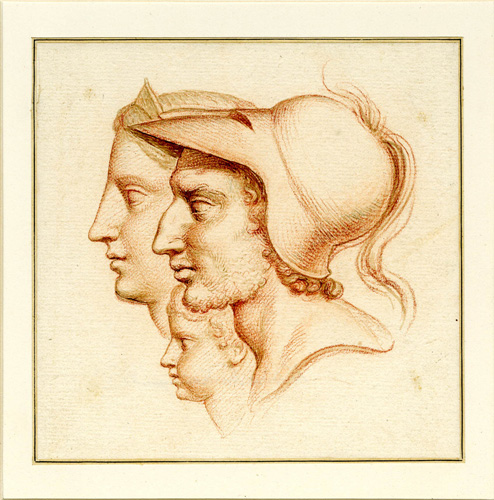Élisabeth Sophie Chéron
Active in: France
Alternate names: Élisabeth Le Hay
Biography
Born in Paris in 1648, Élisabeth Sophie Chéron received her earliest artistic training from her father, who was himself an artist. Chéron spent one year in a convent at the insistence of her mother, a devout Roman Catholic, but by 1670, her artistic talents had developed such that she was admitted to the Académie Royale de Peinture et de Sculpture with the support of the painter Charles Le Brun. She was just the fourth woman artist to be admitted to the academy. She began to exhibit regularly at the Salon and to further develop her literary talents, publishing a book of Psalm paraphrases in 1694, Essay de pseaumes et cantiques mis en vers, et enrichis de figures. In recognition of her literary accomplishments, she was admitted to the Accademia dei Ricovrati in Padua in 1699, where she assumed the academician name of Erato. At the age of sixty, she married Jacques Le Hay and became known as Madame Le Hay. She died in Paris in 1711.
Selected Works
Circle
Daughter of
Henri Chéron
Sister of
Louis Chéron
Friend of
Charles Le Brun
Bibliography
Borzello, Frances. Seeing Ourselves: Women’s Self-Portraits. New York: Harry Abrams, 1998.
Dabbs, Julia. “Anecdotal Insights: Changing Perceptions of Italian Women Artists in Eighteenth-Century Life Stories.” Eighteenth-Century Women 5 (2008).
Dabbs, Julia K. Life Stories of Women Artists, 1550–1800: An Anthology. Burlington: Ashgate, 2009.
Démoris, René, ed. Hommage à Élisabeth Sophie Chéron: Texte et peinture à l’âge classique. Paris: Presses de la Sorbonne Nouvelle, 1992.
Füssli, Johann Caspar. Geschichte der besten Künstler in der Schweiz nebst ihren Bildnissen. Zürich, 1770.
Greer, Germaine. The Obstacle Race: The Fortunes of Women Painters and Their Work. New York: Farrar, Straus, Giroux, 1979.
Hilgar, Marie-France. “Les multiples talents d’Élisabeth Sophie Chéron.” Cahiers du Dix-Septième 2 (1988): 91–98.
Moücke, Francesco. Serie di ritratti degli eccellenti pittori dipinti di propria mano che esistono nell’Imperial galleria di Firenze. Florence, 1752–62.
Perym, Damiao de Froes. Theatro heroino. elLisbon, 1736.
Entry Notes
Contributions to timeline and bibliography provided by Indiana University A300 student Jordan Porter


